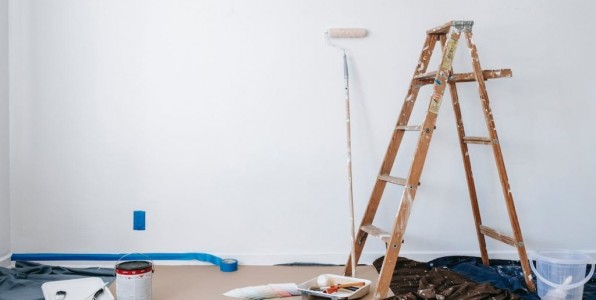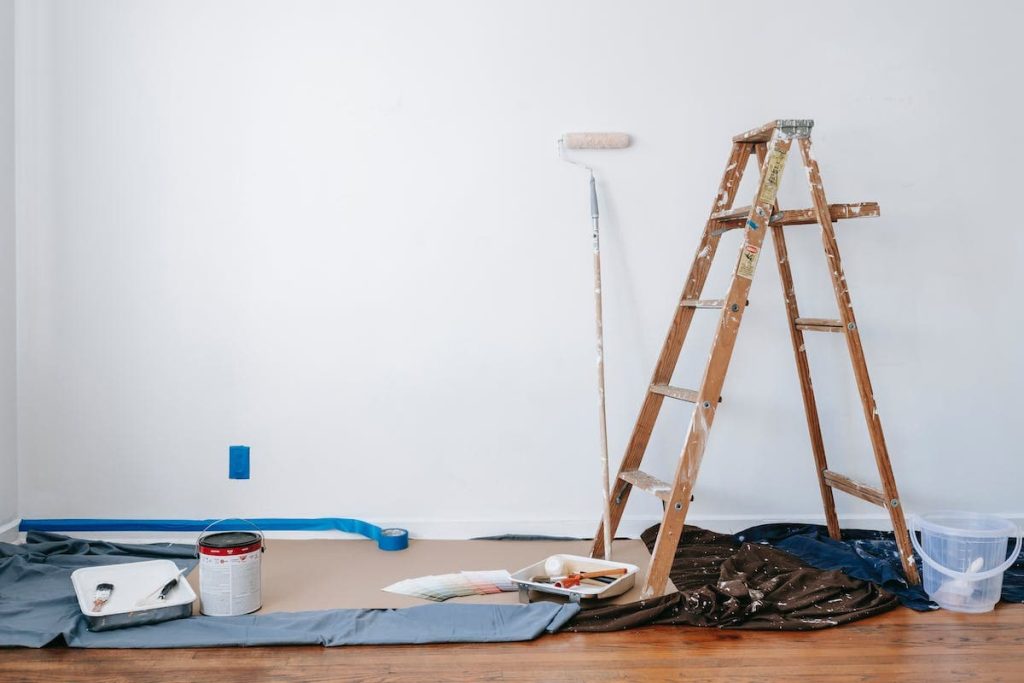DIY Decor Delight: Transforming Your Home with Renovation Painting

DIY Decor Delight: Transforming Your Home with Renovation Painting
The post DIY Decor Delight: Transforming Your Home with Renovation Painting appeared first on UK Construction Blog.
Transforming a home takes vision and effort, but sometimes it needs a fresh coat of paint. With a bit of creative renovation painting, you can completely update and refresh your living spaces without major construction or major expenses. A quick painting project allows you to bring new life and personality into rooms that have grown tired or dated.
By choosing colors, finishes, and techniques thoughtfully, some paint and elbow grease are all you need to design the warm, welcoming home of your dreams. In this guide, we will explore easy DIY painting tricks and tips to overhaul the look and feel of rooms throughout your home without breaking the bank.
Step-By-Step Guide to an Impeccably Painted Home

Start your journey to a beautifully painted home with a carefully laid out plan. Before diving in, consider the atmosphere you want to evoke in each room. Remember, colors not only transform your space’s aesthetics but also significantly impact the mood and emotions of the inhabitants. Once you have your vision, you are ready to embark on this exciting DIY renovation painting project.
Step 1: Prepare Your Room
Before you start painting, remove all the furniture from the room or move it to the center and cover it with drop cloths. Then, take off any wall decorations, switch plates, and outlet covers. Cleaning the walls is crucial to ensure a smooth application of paint. Use a sponge and a mixture of mild detergent and water to gently scrub away any dirt, dust, or grease spots.
Step 2: Prime the Walls
Priming the walls is a vital step often overlooked. Apply a layer of primer to create a perfect canvas for your paint. It helps the paint adhere better to the walls, reduces blotchiness, and allows the paint color to shine in its full intensity.
Step 3: Choose High-Quality Paint
It’s crucial to invest in high-quality paint. Not only will it be easier to apply, but it will also last longer and resist fading and chipping. Once you have chosen your colors, decide on the finish. Matte finishes are great for concealing imperfections, while glossy finishes offer a smoother, shinier appearance but can highlight flaws.
Step 4: Start Painting
Start painting the trim first, then the ceiling and walls. Begin at the top and work your way down for a smooth, drip-free finish. Allow the paint to dry completely between coats. Two coats are often enough, but you might need a third coat if the walls are dark or the paint is light.
Step 5: Hire a Professional
In case you find the task too daunting or you’re pressed for time, don’t hesitate to hire a professional. Professional painters have the experience and equipment to deliver flawless results in a fraction of the time it would take an amateur. Contact them to get an estimate and discuss your vision for the space.
Step 6: Clean Up
Once you have finished painting, it’s time to clean up. Remove all masking tape while the paint is still slightly wet to prevent it from pulling off any paint. Clean your brushes and rollers thoroughly so they can be reused for future projects. Dispose of empty paint cans responsibly, following your area’s regulations for hazardous waste disposal.
Step 7: Add the Finishing Touches
After the paint has completely dried, move the furniture back in place. Hang pictures, mirrors, and other wall decorations at a suitable height to enhance the visual appeal of the room. Add soft furnishings such as throw pillows or rugs in complementing colors to tie the room together and make it feel more welcoming.
Step 8: Enjoy Your Newly Painted Space
The final step is to sit back and enjoy the fruits of your labor. Your freshly painted room should reflect your personality and taste. Celebrate the transformation and consider hosting a small gathering to show off your newly renovated space.
Creative Ideas to Transform Any Room with Paint
- Color Blocking: Add visual interest by painting different shades of the same color on opposite walls, creating a modern and artistic look.
- Faux Finishes: Create texture and depth with techniques like sponging or rag rolling. These are perfect for adding character to plain walls.
- Accent Wall: If you want to add a pop of color without committing to painting the entire room, consider an accent wall. Choose a bold hue or pattern and make it the focal point of the space.
- Statement Ceilings: Paint your ceiling a bold color or add a fun design to draw attention upwards and make your ceilings appear higher.
- Ombre Walls: Blend different shades of the same color from light to dark for a trendy and eye-catching effect.
FAQ
Q: Can I paint over the wallpaper?
A: Yes, but it’s not recommended. Removing wallpaper before painting for a smooth and long-lasting finish is best.
Q: How do I choose the right colors for my home?
A: Consider the mood you want to create in each room and choose colors that evoke those emotions. You can also take inspiration from your furniture and decor to create a cohesive color scheme.
Q: How long does it take for paint to dry?
A: It depends on factors like humidity and temperature, but typically, paint takes 2-4 hours to dry. Allow at least 24 hours before applying a second coat.
Conclusion
With these tips and ideas, you’re now equipped to tackle any painting project and turn your home into a personalized, inviting space. Plan, prep, and choose high-quality materials for the best results. Don’t be afraid to get creative and experiment with different techniques to achieve unique designs. And most importantly, have fun with your DIY renovation painting journey.
Comments are closed